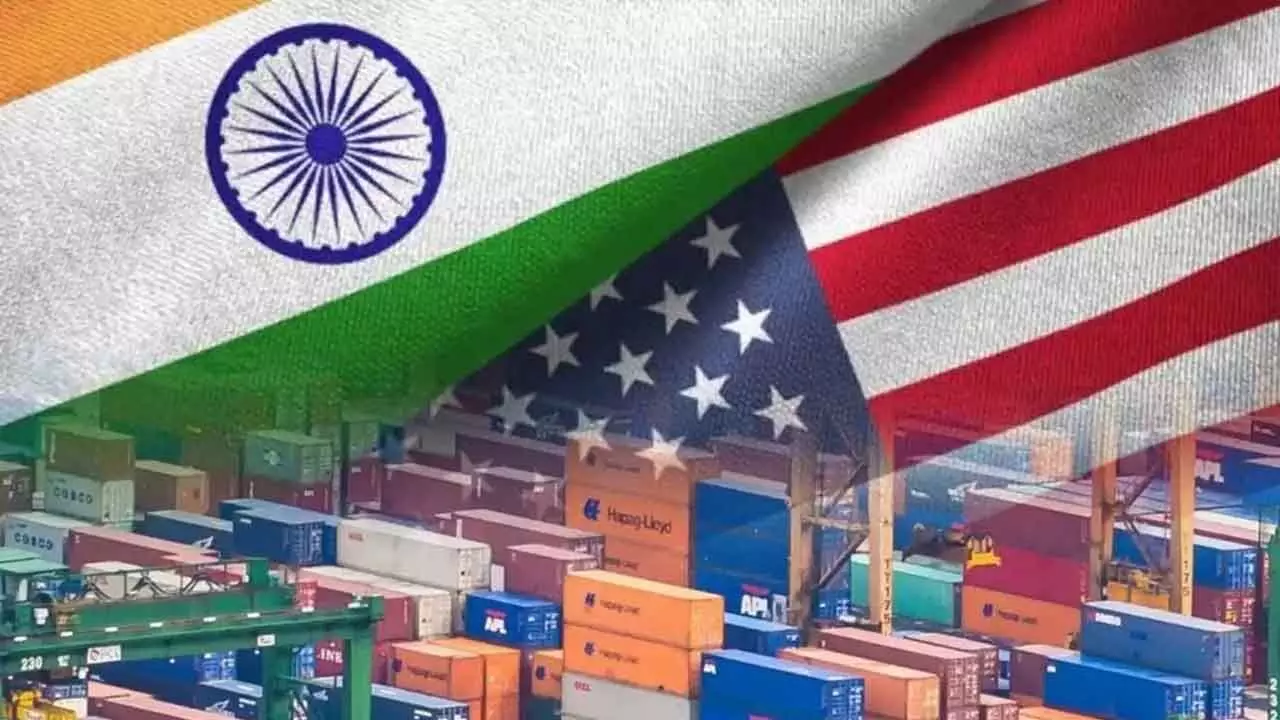US-India Trade Deal: A High-Stakes Race Against the Tariff Clock
As the critical July 9th deadline looms, the US and India are intensely negotiating a bilateral trade agreement. President Donald Trump remains optimistic for a deal with "much less tariffs," but India's firm stance on agricultural and dairy sectors presents significant hurdles. Discover what's on the table and the implications if talks fail.
US-India Trade Deal: A High-Stakes Race Against the Tariff Clock

The clock is ticking for a landmark trade agreement between the United States and India. With just days remaining until a critical July 9th deadline that could trigger the reinstatement of hefty reciprocal tariffs, negotiators from both nations are engaged in high-stakes talks, working feverishly to bridge significant divides.
President Donald Trump, ever confident, reiterated on July 1st (local time) his belief that a deal with "much less tariffs" is on the horizon. "I think we are going to have a deal with India. And that is going to be a different kind of a deal," Trump stated, emphasizing a future where American businesses can "compete" more effectively in the Indian market. He added, "Right now, India does not accept anybody in. I think India is going to do that, and if they do that, we are going to have a deal for much less tariffs."
Deadline Looms: The July 9th Tariff Cliff
The urgency stems from the approaching expiration of a 90-day pause on tariff escalations. Imposed on April 2nd, the suspension of a 26 percent reciprocal tariff structure will automatically lift on July 9th if no agreement is reached. This means both countries face the immediate return of these punitive duties, a scenario neither side wishes to see. A senior official candidly warned, "The failure of these trade discussions would trigger the immediate reimplementation of the 26 percent tariff structure."
To avert this, Indian Chief Negotiator Rajesh Agrawal and his delegation have extended their stay in Washington, pushing past initially scheduled negotiation dates of July 3rd and 4th. The extended discussions underscore the intense effort to finalize at least an interim trade agreement.
Agricultural Sticking Points and National Priorities
At the heart of the protracted negotiations lies India's staunch position on its agricultural sector. Government sources reveal that India has adopted a firmer stance, particularly regarding agricultural matters, as talks enter a pivotal phase. This rigidity is deeply rooted in the political and economic sensitivities surrounding India's farming landscape, which is predominantly characterized by small-scale, subsistence farmers with limited land holdings. Concessions in this area pose immense challenges for New Delhi.
Notably, India has historically kept its dairy sector closed to foreign companies, a practice it appears highly reluctant to abandon even under significant pressure from the United States. The US, on its part, is actively pushing for reduced duties on a range of agricultural products, including apples, tree nuts, and genetically modified crops.
Conversely, India is advocating for preferential market access for its labor-intensive exports, vital for its economy and employment. These include sectors such as textiles and garments, gems and jewelry, leather goods, and agricultural products like shrimp, oilseeds, grapes, and bananas.
A Half-Trillion Dollar Vision
Beyond the immediate tariff concerns, both nations share an ambitious long-term objective: to more than double bilateral trade from the current $191 billion to a staggering $500 billion by 2030. This overarching goal provides a powerful incentive for negotiators to find common ground and lay the foundation for a more expansive and mutually beneficial trade relationship.
As the deadline draws nearer, the global economic community watches with bated breath. The outcome of these intricate discussions will not only shape the immediate trade landscape between two of the world's largest economies but also set a precedent for future international trade dialogues.

